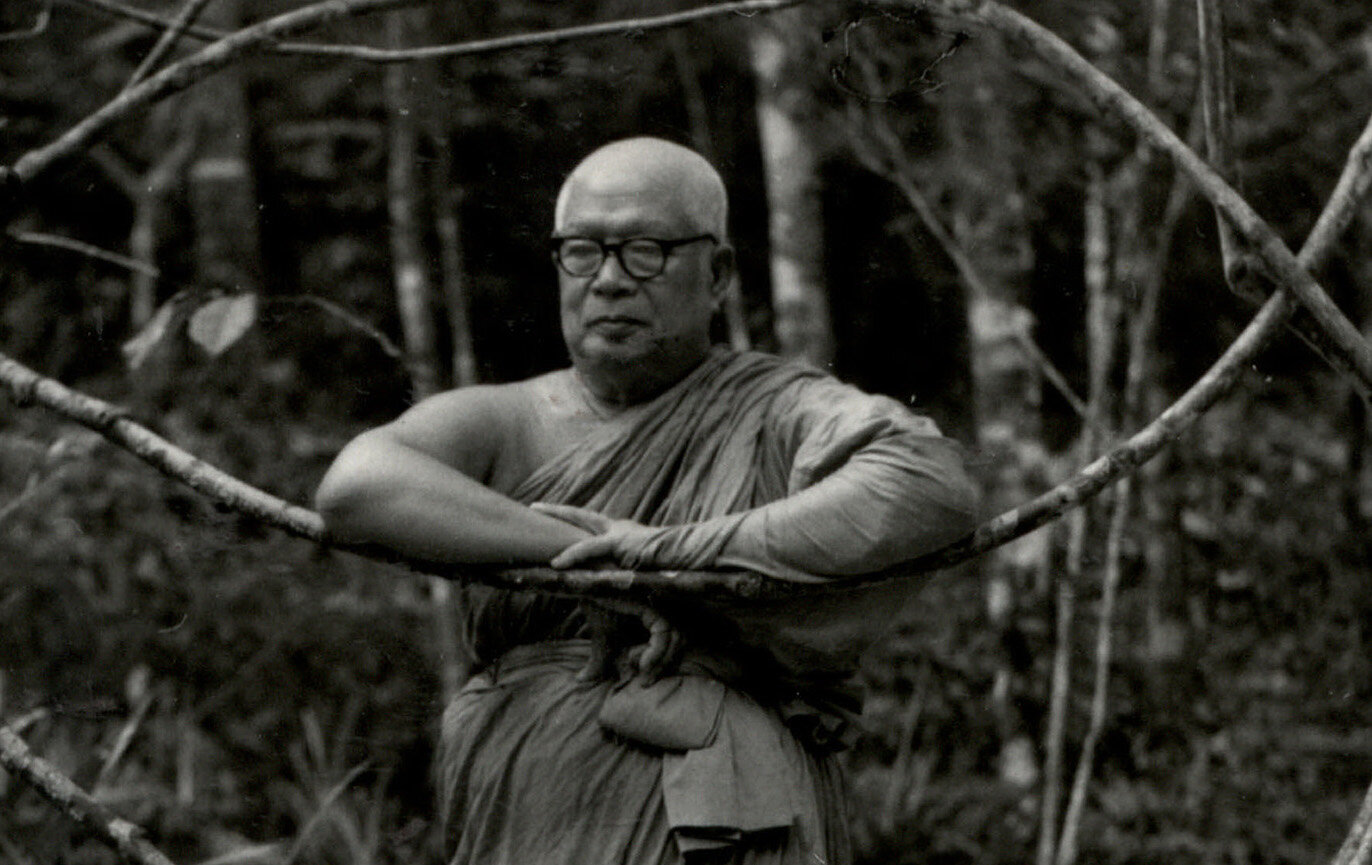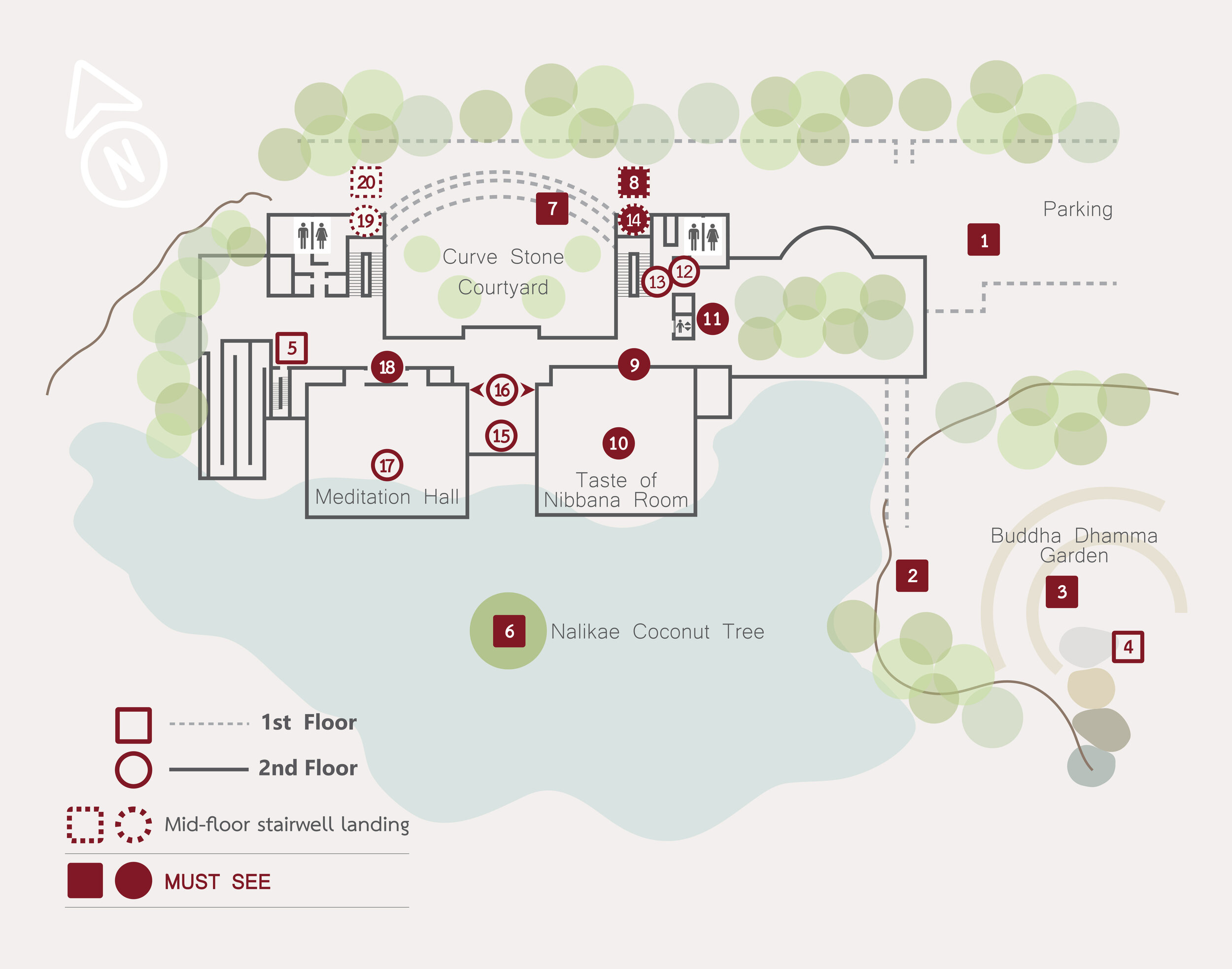Wheel of Life
Zen Garden
How suffering arises and ceases
The Wheel of life or Wheel of Existence is a symbolic representation of what Buddhadasa Bhikku referred to as the “Heart of Buddhism,” the most profound teaching given by the Buddha.
Displayed on the walls of all Tibetan Buddhist temples and monasteries, such artwork depicts the cyclical nature of birth and rebirth, which is connected by links in a process known as the Law of Dependent Origination - Paticcasamuppada.
Buddhadasa Bhikku emphasizes that the Buddha’s references to birth and rebirth here do not pertain to the physical coming into the world through a mother’s womb. Rather, it is the birth of “I” or “ego” that arises in the mind, as can occur and reoccur many times through the course of one day, giving rise to suffering.
To Buddhadassa Bhikkhu, proper understanding of Paticcasamuppada is essential. It proves through a 12-linked chain how ignorance of the natural interdependence of all things feeds an ongoing cycle of suffering in our lives. But when understood, the cycle can be broken. Suffering ceases.
Buddhadasa Bhikkhu concedes that Paticcasamuppada can appear quite complicated at first, even require a month or two to explain. In the field of practice, however, “Paticcasamuppada is, as the Buddha says, ‘Just a handful.’”
"Paṭiccasamuppāda is a momentary and sudden (khaṇikāvāda) matter, not an eternal matter. The word jati - to be born - must refer to birth in the moment of one revolution of Dependent Origination in the daily lives of ordinary people. It’s easy to know: when greed, anger, or delusion arise, then the ‘self’ is born in one ‘life’ already.”
Like the teaching it represents, the symbolism in the Wheel of Life artwork can take time to comprehend. What follows is the interpretation offered by Buddhadasa Bhikkhu.
The black demon at the top holding and devouring the wheel symbolizes time. The five skulls on its head represent the Five Aggregates: corporeality, feeling or sensation, perception, mental formations, and consciousness. The mind’s original state is clear and empty of a sense of self. Whenever the mind gets attached to these Five Aggregates with a sense of ‘I’, ‘me,’ and ‘mine,’ life gets eaten away by time, which results in great suffering.
The wheel, comprising four circles, represents different states of mind when life is consumed by the Demon of Time. The smallest circle in the center shows a chicken, a pig, and a snake biting each other’s tails. This illustrates the corrupting power of the defilements, namely attachment, aversion and ignorance. These defilements tarnish the original clear mind and drive unwholesome actions. This gives rise to a never-ending cycle of defilements, actions and consequences, resulting in the round of rebirth, which imprisons beings in endless suffering.
Surrounding the center, the next circle of the wheel further illustrates how the cycle of defilements, actions, and consequences endlessly fuels the round of rebirth. This layer is split into black and white. The black side represents negative karmic conditions such as unwholesome actions, evil, suffering, and hell, while the white side symbolizes positive karmic conditions like wholesome actions, virtue, happiness, and heaven. Although beings in the white half do good deeds and feel ashamed to do wrong, they still attach themselves to merit, virtue, happiness and heaven with the sense of ‘I’, ‘me,’ and ‘mine.’ Consequently, the mind is not yet free and is thus unable to truly rise above both evil and good deeds.
The next circle of the wheel consists of the five realms of different mind-states in everyday life. These realms arise whenever the mind comes into contact with sense-objects while lacking wisdom. Thus the mind clings to the sense of ‘I’, ‘me,’ and ‘mine’ and shifts from one state to another in the five realms. The upper right section depicts the realm of human beings, arising when the mind is in a moderate state without extreme suffering, conducive to learning and meditation. Clockwise from the first section is the realm of hungry ghosts, which shows the mind full of craving and greed. Next is the realm of hell beings, which arises when the mind is burning with anger, anxiety and suffering, and is unable to rest in peace. The realm of animals represents the mind dominated by animal instincts—i.e., cravings for food, cowardice, sexual desire, and drowsiness. Finally, the realm of heavenly beings arises when the mind, although ashamed to commit wrongdoing, is still attached to virtue and happiness, causing one to constantly seek happiness and fight to compete for it.
The outermost circle depicts the twelve causal links of Dependent Origination, explaining the twelve interrelated mental factors that lead beings to suffer and to be blindly engulfed in the cycle of existences. The link of ignorance is illustrated by an old blind man being led by a boy who does not know where he is going. Ignorance leads to volitional formations, as represented by the potter making clay pots. The next ten causal links are: consciousness; mind and matter; six sense-bases; contact; feeling or sensation; craving; clinging or attachment; process of becoming; birth; and decay and death. Due solely to ignorance, these causal links all arise in a rapid sequence and lead to suffering.
In the top right-hand corner of the painting, the Buddha is showing his disciple the way to escape from the cruel cycle of birth and death. He is pointing toward the Wheel of Truth in the top left-hand corner. The Wheel of Truth represents the Four Noble Truths, or the knowledge and practices that lead to liberation from suffering. The Four Noble Truths explain the nature of suffering, the cause of suffering, the cessation of suffering, and the Noble Eightfold Path, which is the path leading to the cessation of suffering. The Four Noble Truths, each with the three aspects of intuitive knowledge, make up the twelvefold intuitive insight, which is illustrated as the twelve spokes of the Wheel of Truth. By following the Noble Eightfold Path with wisdom and being constantly aware of every mental process and each moment of contact, we can liberate ourselves from ignorance and suffering.




